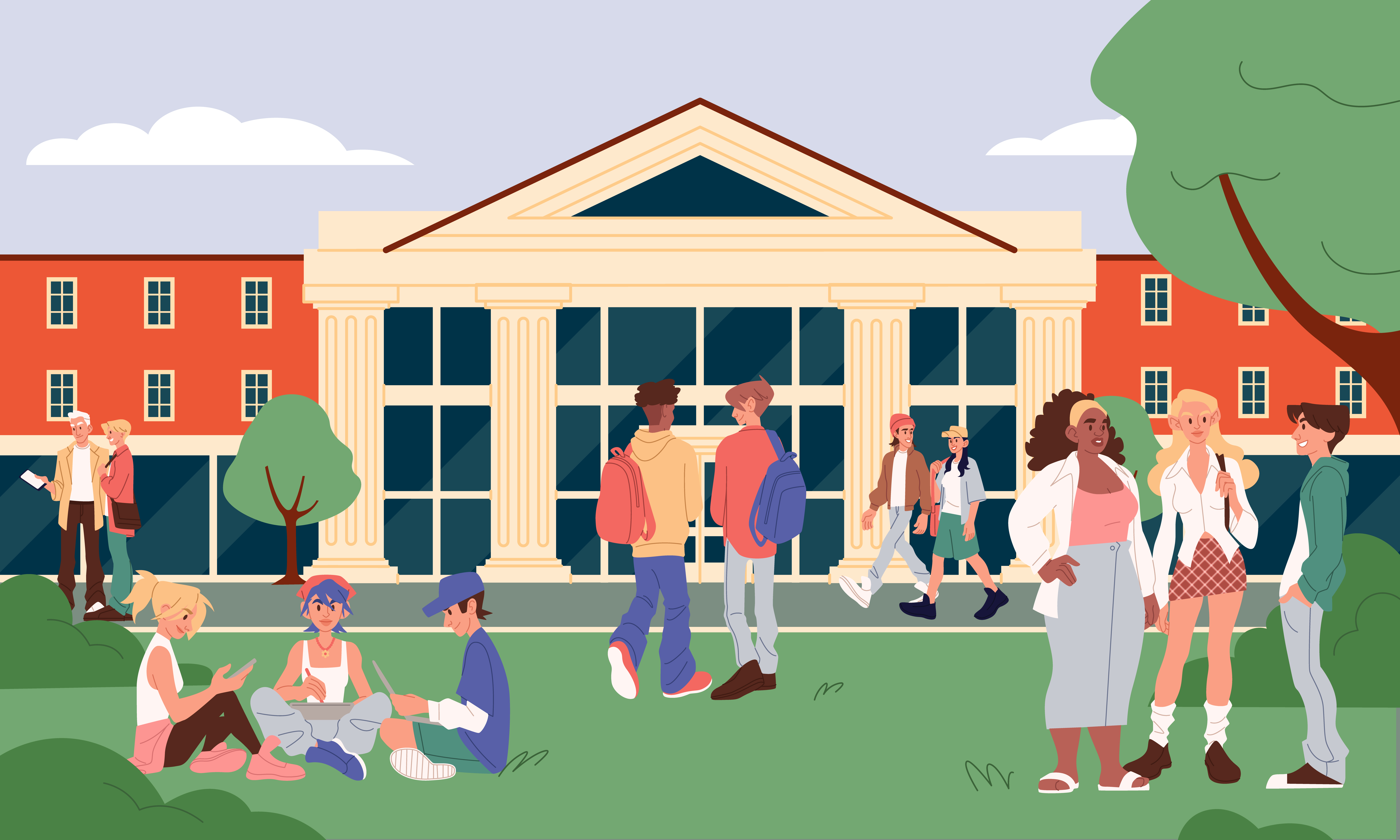Cracking the Code of Profitable, Sustainable, Identity-Driven Retail Food Service
Community colleges are entering a new era. Student expectations have changed. Operational realities have tightened. Margins are under pressure. Campuses must serve students who live complex, fast-paced, financially constrained lives. These students need a service that is efficient, affordable, and aligned with their movement patterns. They also deserve a campus environment that builds pride, culture, and institutional identity.
Drawing on decades of SOCIAL ARCHITECTURE™ and the disciplined retail and operational principles that guide the highest performing campus stores in the country, the Next-Gen Community College Campus Retail Store or NGCCRS, prototype provides a complete answer. It is designed as a fully realized pilot model that can be implemented, tested, refined, and then scaled across a college or district.
The NGCCRS prototype combines precise menu engineering, space-efficient food service, high-margin merchandise, school spirit, academic supplies, electronics, and extended-hour operations into a single, sustainable, and financially coherent retail ecosystem.
This is not a scaled-down bookstore. It is not a food court. It is not a convenience store. It is a purpose-built prototype system engineered for community college realities, profitability requirements, operational simplicity, and brand identity building.
- The New Reality of Community College Retail
Community college students do not behave like residential students. They do not linger. They do not gather for long meals. They move quickly. They make fast decisions. They want to get what they need and get on with their day.
The NGCCRS prototype understands this. It is built around short dwell times, clear sightlines, high velocity categories, and a menu that students can understand instantly. It is retail design aligned with behavioral flow.
The problem with legacy models is not that community college students do not want food service. They do. The problem is that most campuses offer the wrong kind of food service. Expansive menus, complex production lines, low-margin items, and unpredictable foot traffic lead to operational failure.
The NGCCRS prototype corrects this by adopting a narrow, disciplined, margin-driven approach where every category has a clear business case, and every square foot earns its keep.
- Retail Food Engineering for Profitability
Profitable campus retail food service is not built on culinary variety. It is built on disciplined menu construction, predictable movement patterns, and controllable waste. The NGCCRS prototype succeeds because it uses a focused model engineered for throughput, sustainability, and high margin performance.
- Beverage programs become the financial driver
With the elimination of single-use bottles and cans, the beverage model shifts to a structured refill system. This is not only environmentally responsible. It is a margin amplifier.
Refillable hot and cold beverage programs create:
- High profit per ounce
- Minimal waste
- Faster throughput
- Strong brand visibility through reusable vessels
- Daily repeat traffic that drives cross-category sales
Students carrying branded mugs and refill bottles become living advertisements for the institution. This is brand halo at its most organic level.
- Breakfast becomes the prime transaction window
Community college students arrive early. Breakfast is the highest volume and most predictable daypart. The NGCCRS prototype menu is intentionally narrow. It features portable items that can be produced or stocked in controlled batches with minimal labor and high reliability.
Examples include:
- Prepared breakfast sandwiches
- Pastries and muffins
- Fruit and protein boxes
- Yogurt parfaits in durable returnable containers
The goal is zero hesitation for the student and zero unpredictability for the operator.
- Lunch is built for grab-and-go velocity
Lunch is the second major revenue opportunity, but it must remain disciplined. Prepared salads, wraps, sandwiches, and bowls remain the backbone. No custom lines. No complex cook to order. No high-waste hot bars.
The model is built for restocking, not cooking. This is how community college food service becomes profitable.
- The dinner window is simplified and stabilized
Evening traffic on commuter campuses is inconsistent. The NGCCRS prototype uses a convenience forward dinner strategy with heat-and-eat items, simple entrees, snacks, and protein-rich options. This controls labor and prevents spoilage while still supporting students who remain on campus at night.
- Packaging supports sustainability and speed
The hybrid packaging model blends:
- Durable multi-use containers
- Strategic return points
- Compostable sleeves, bowls, and wraps
Operators control inventory. Students experience a sustainable system. The institution demonstrates leadership.
This combination is both operationally realistic and sustainability driven.
III. The Multi-Channel Retail Environment: Where Everything Works Together
The NGCCRS prototype is not a store with separate departments. It is one cohesive commercial organism. Each category supports the others.
- Students come for a refill. They see spirit apparel.
- Students come for a sandwich. They pick up a stylus or a notebook.
- Students come for a charger. They notice a healthy snack.
- Students come for a snack. They explore academic program merchandise.
This adjacency is not accidental. It is designed.
High-margin merchandise is intentionally placed near the highest traffic food and beverage paths. Supplies and electronics are located near the POS to support impulse need-based purchasing. Spirit apparel is positioned for visibility. Graphics communicate brand identity at the moment of transaction.
This is how a community college with limited square footage builds a strong retail halo that reinforces culture and pride.
- The Brand Halo Effect: Where Culture and Commerce Intersect
The brand halo effect occurs when students repeatedly interact with compelling visual identity systems in meaningful contexts. The NGCCRS prototype creates this through:
- Sustainable refillable branded vessels
- Program-specific merchandise
- Modern, clean, student-centric graphic design
- Seasonal apparel drops
- Purpose-driven storytelling in the retail environment
Every time a student refills a branded cup, uses a durable container, buys a hoodie tied to their academic program, or interacts with the store’s visual language, the campus identity becomes stronger.
Culture grows through repetition.
Pride grows through representation.
Brand perception grows through visibility.
This is why retail cannot be separated from culture building. In the NGCCRS prototype, retail is culture-building.
- Space Planning and Operational Logic
To succeed financially, the NGCCRS prototype must be designed with precision. This is where the operational mindset and space planning discipline strengthen the model.
Key principles include:
- A clear entry line of sight to beverages and grab-and-go food
- Short, direct circulation paths preventing bottlenecks
- A compact footprint for food service, minimizing back of house requirements
- Modular fixtures that can adapt seasonally
- Wide perimeter displays for apparel and brand graphics
- Central POS locations for efficient throughput
- Strategic adjacency of food, supplies, and electronics
This is not a store that grows organically over time. It is a store that performs because its architecture anticipates behavior and aligns the flow of people with the flow of revenue.
- Extended Hours and the Commuter Rhythm
Community college campuses run early and late. The NGCCRS prototype maintains extended hours because profitability and service alignment require it.
Extended hours support student success. They also increase the velocity of transactions across multiple dayparts. The store becomes a consistent presence. A safe place. A dependable resource. A cultural anchor.
VII. Sustainability as a Retail and Brand Advantage
Sustainability is not an optional attribute. It is a strategic differentiator.
The NGCCRS prototype makes sustainability visible, tangible, and habitual. Students refill. They return containers. They see compostable materials used with purpose. Sustainability becomes part of the campus identity.
This matters because students today expect institutions to reflect their values. When sustainability is embedded in retail and food service, it strengthens trust. Trust strengthens culture. Culture strengthens enrollment decisions and alumni affinity.
The result is an institution that not only performs financially but communicates meaningfully.
VIII. The Future of Community College Retail
The NGCCRS prototype is not a concept. It is a model built for implementation. It solves the long-standing challenge of profitable food service in a commuter environment. It strengthens the college’s identity through merchandise and visual branding. It supports students through efficiency and clarity. It aligns with sustainability goals. It improves the financial performance of auxiliary services.
Colleges can launch a single NGCCRS prototype location as a proof-of-concept store, measure performance against clear financial and student experience targets, and then replicate the model across additional sites with confidence. The prototype becomes both a learning laboratory and a visible symbol of the institution’s commitment to next-generation campus life.
This is the next evolution of community college campus life. A single integrated marketplace where food, merchandise, technology, supplies, sustainability, culture, and identity come together to form a unified experience.
The NGCCRS prototype is not just a store. It is a brand engine. It is a community anchor. It is a financial model that works. And it is the next strategic step for community colleges that want to build culture, pride, and belonging while operating with intelligence and discipline.
















